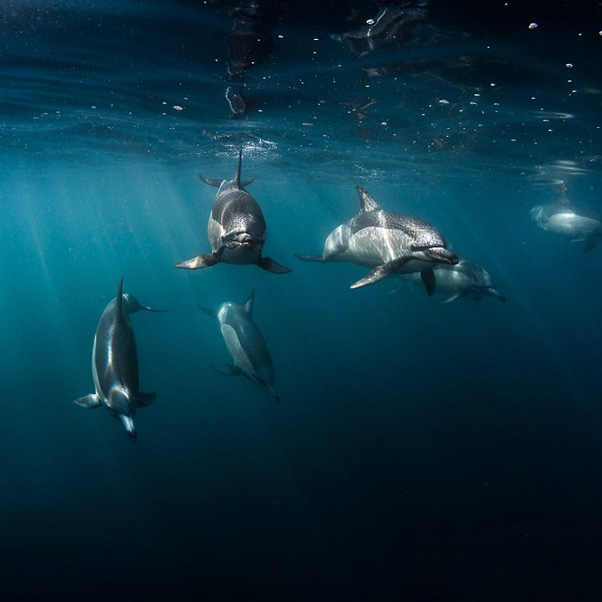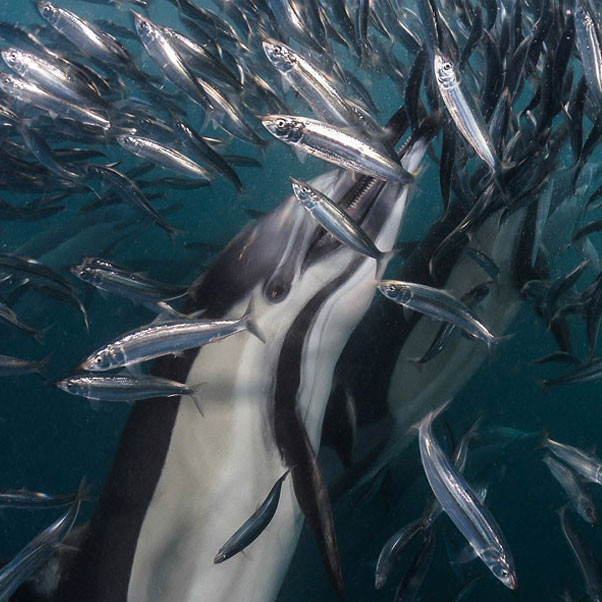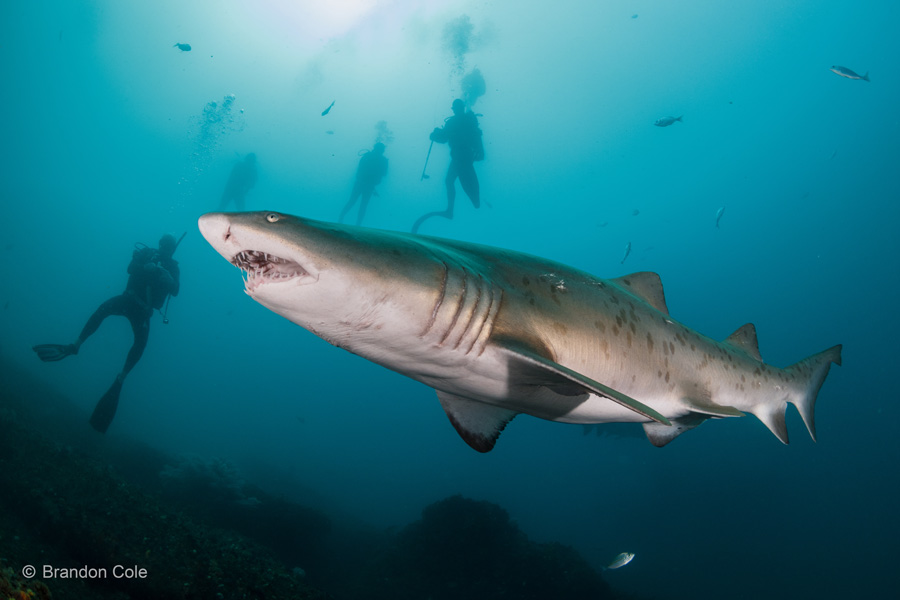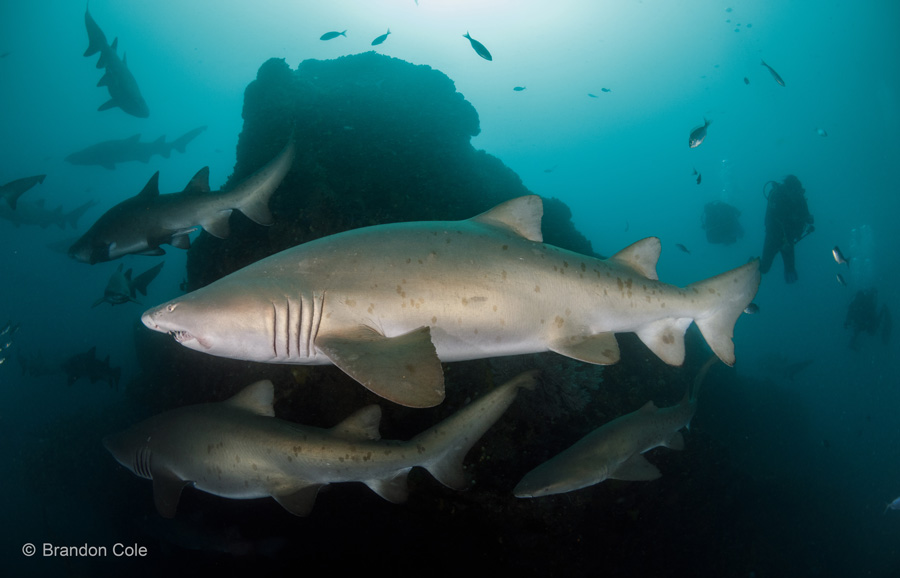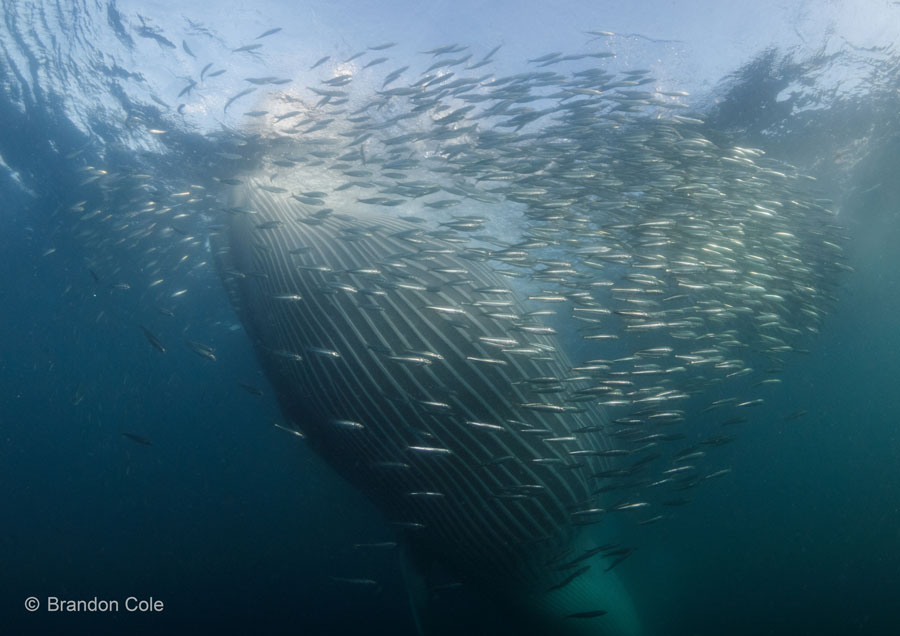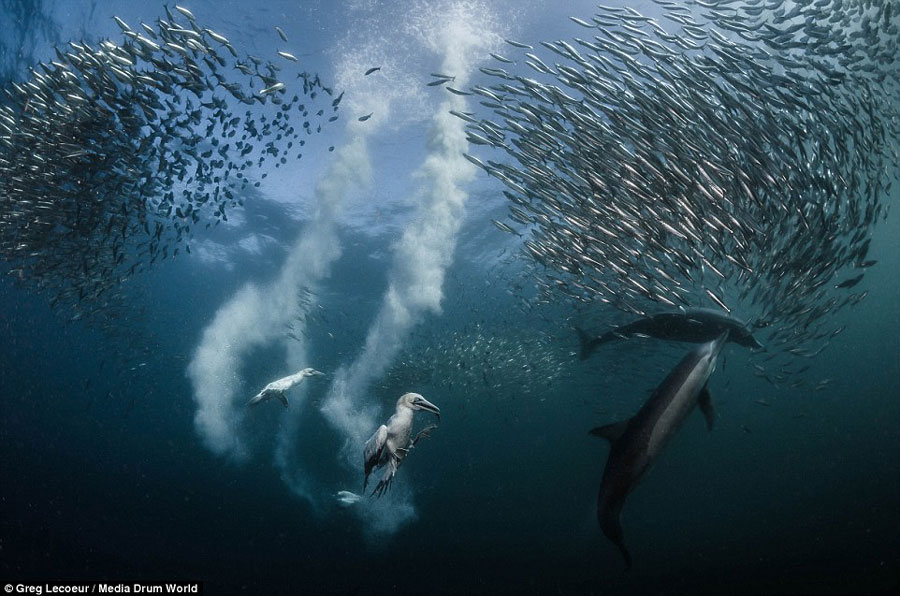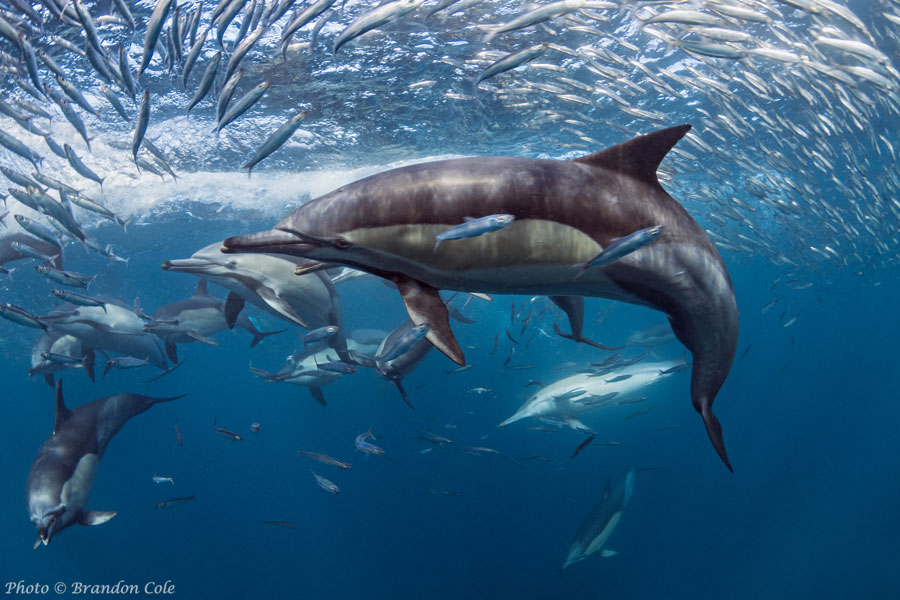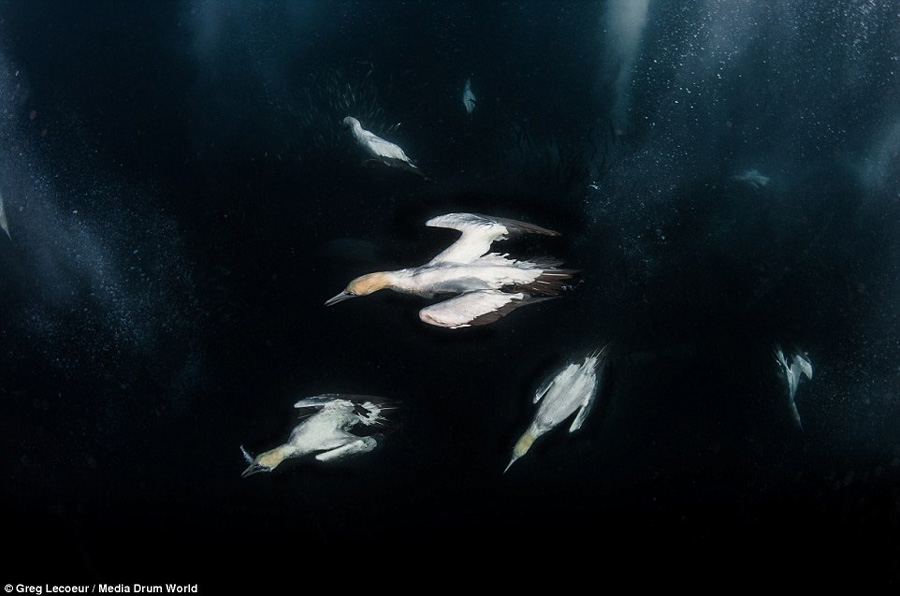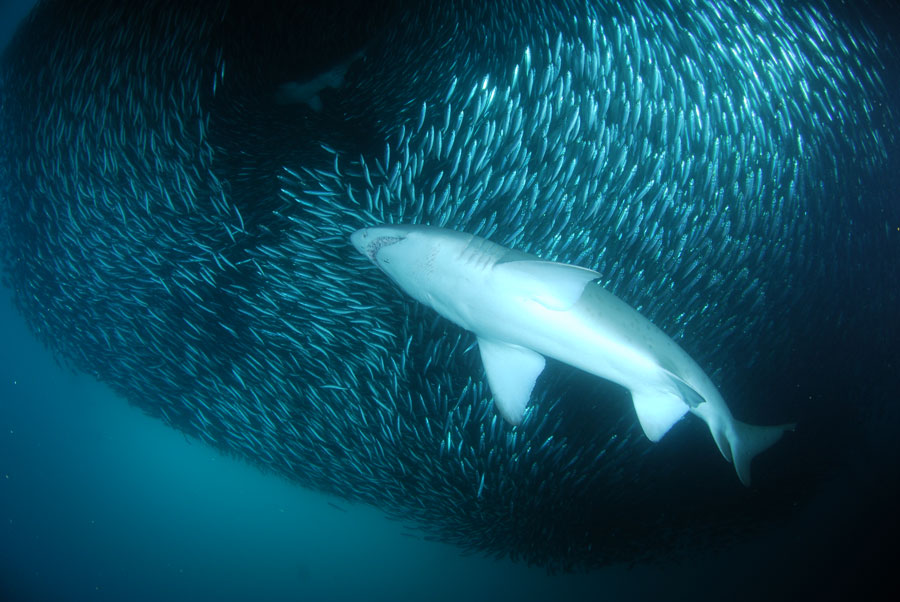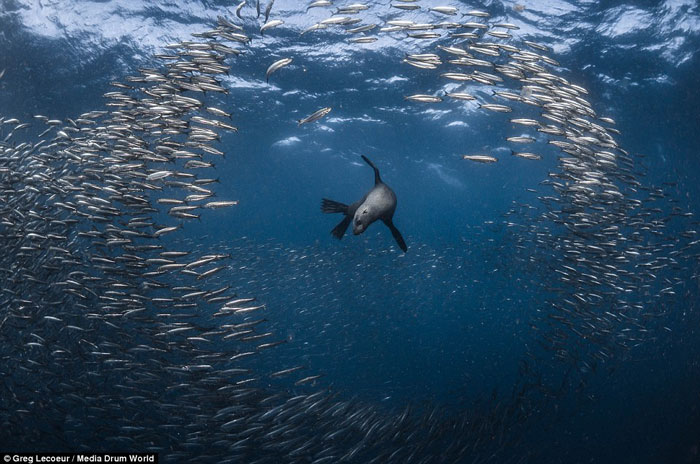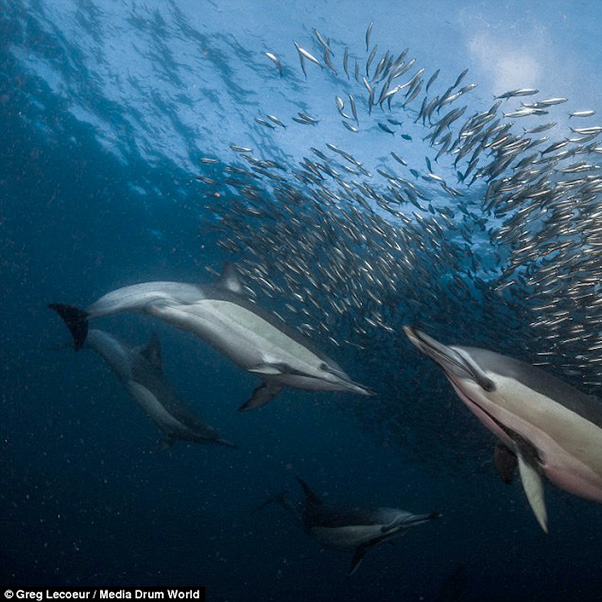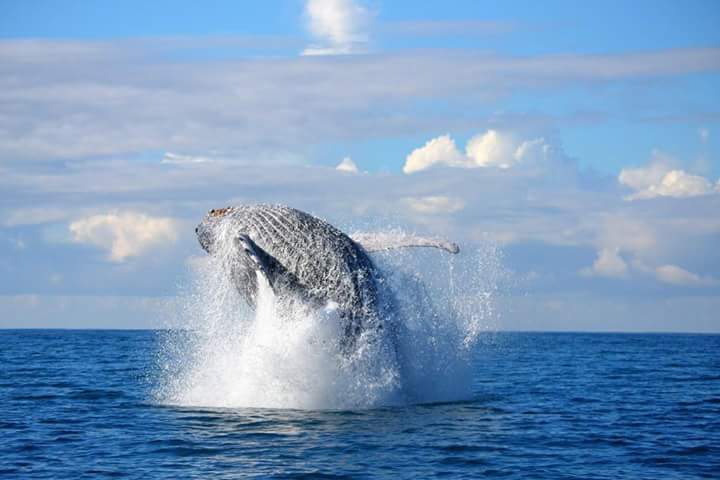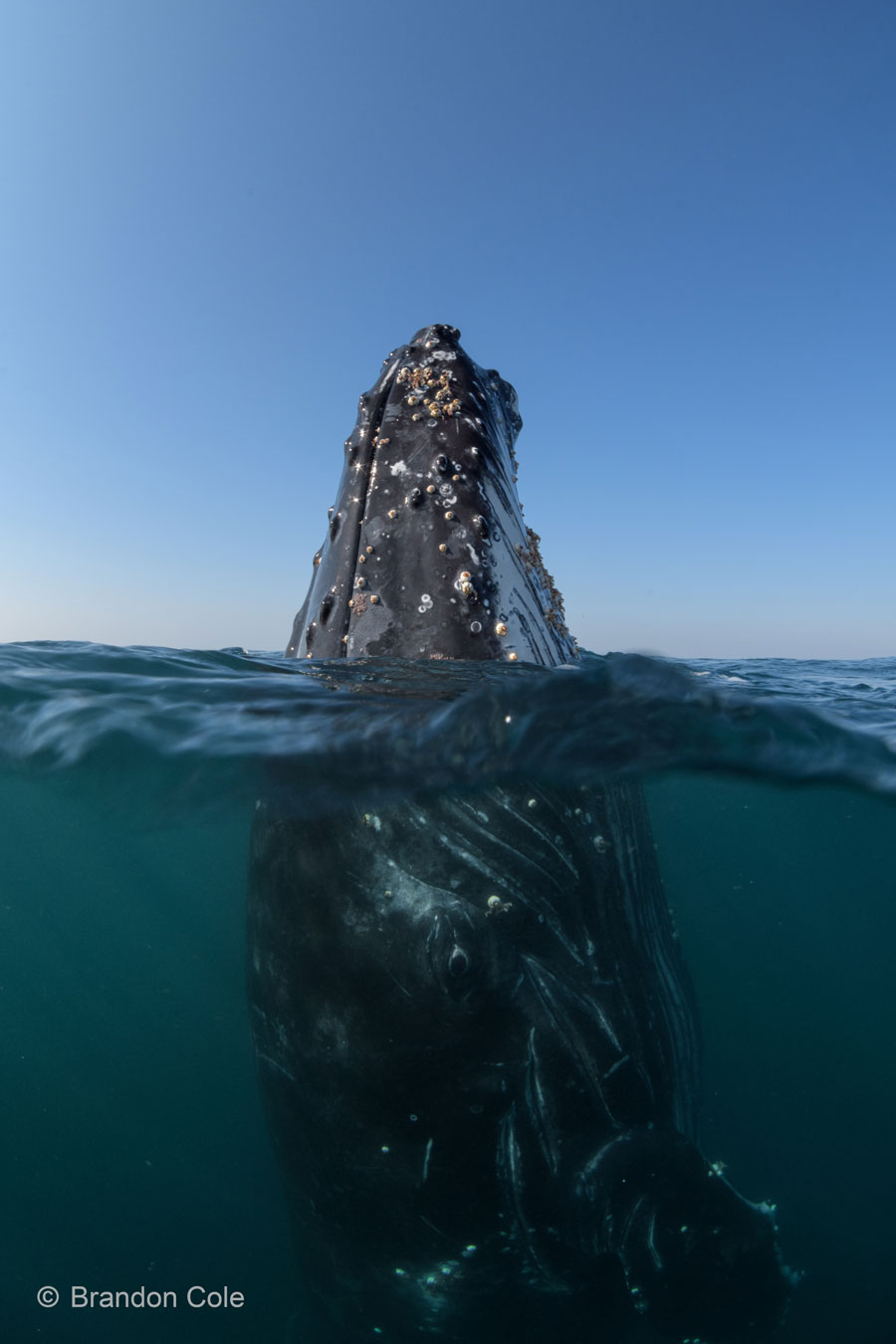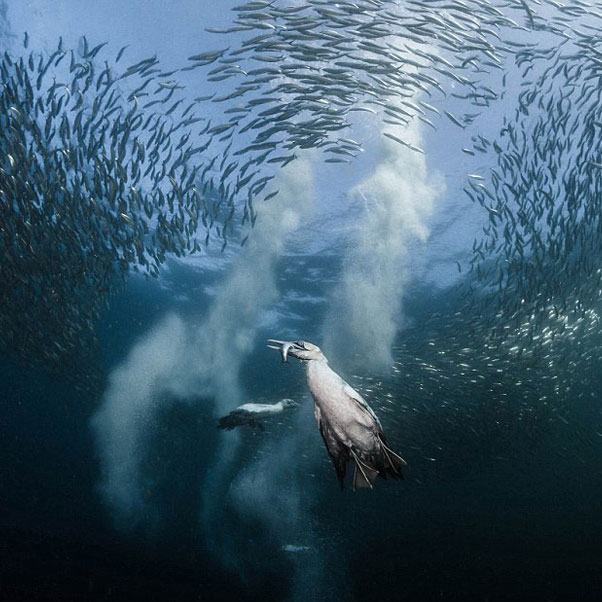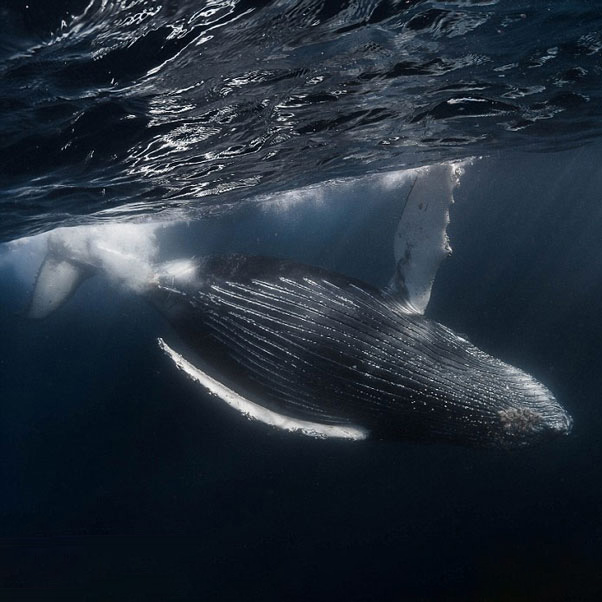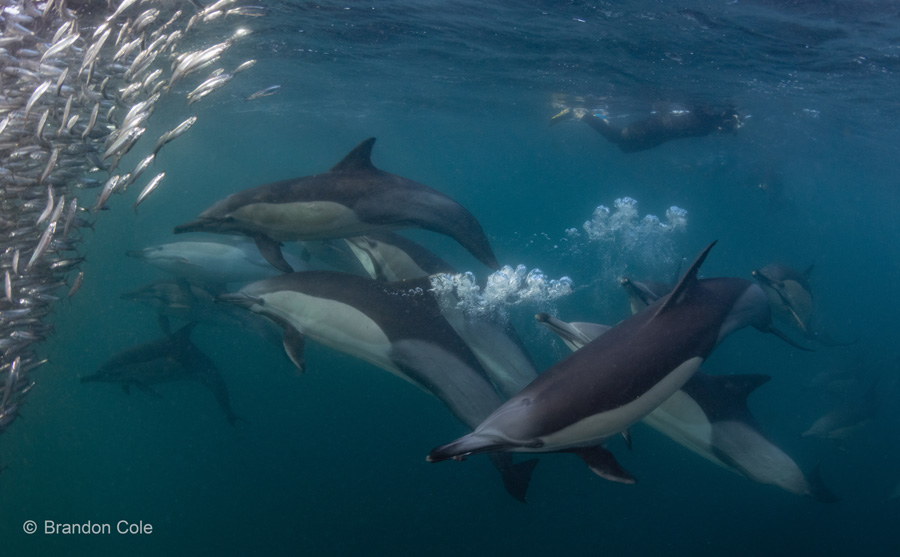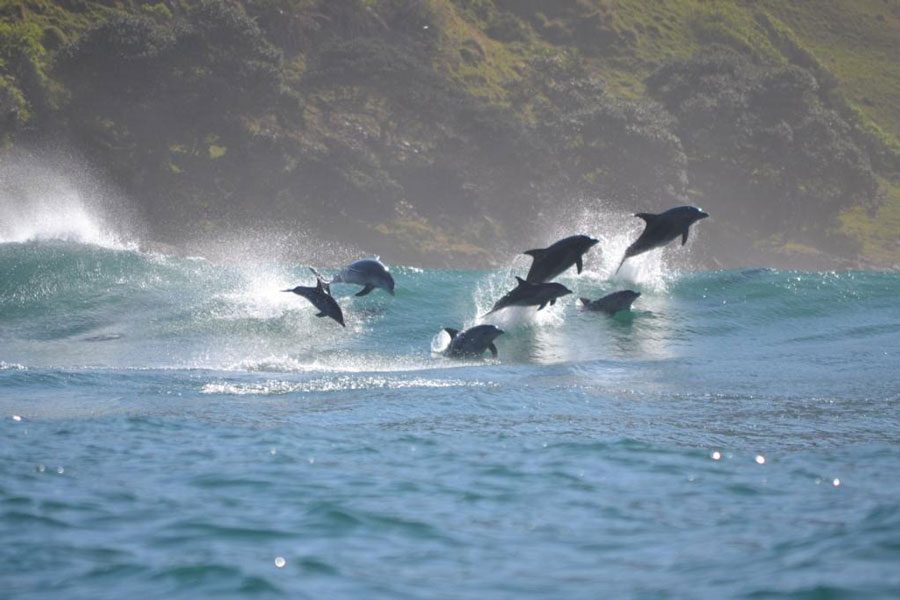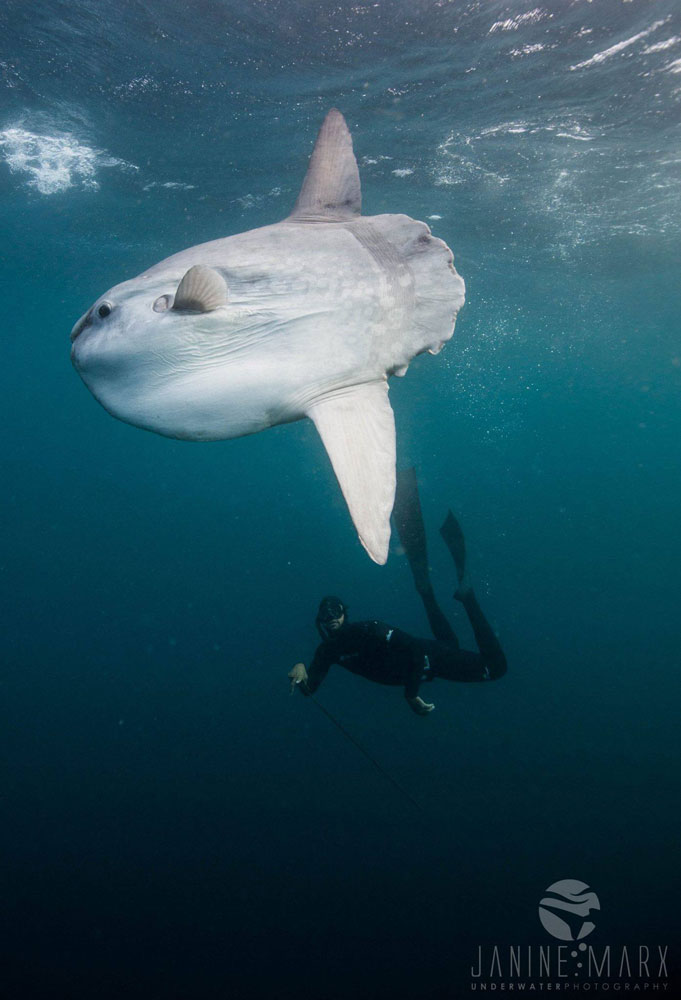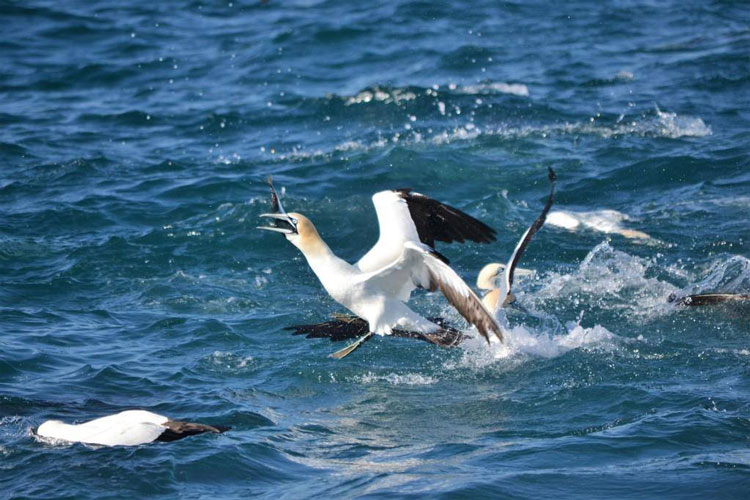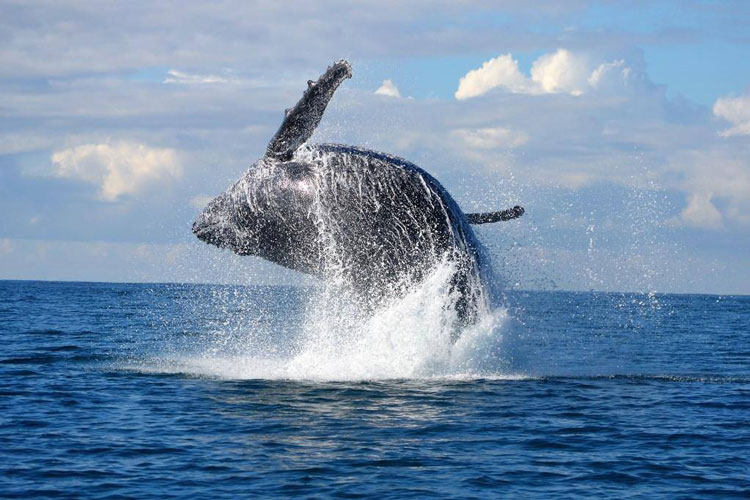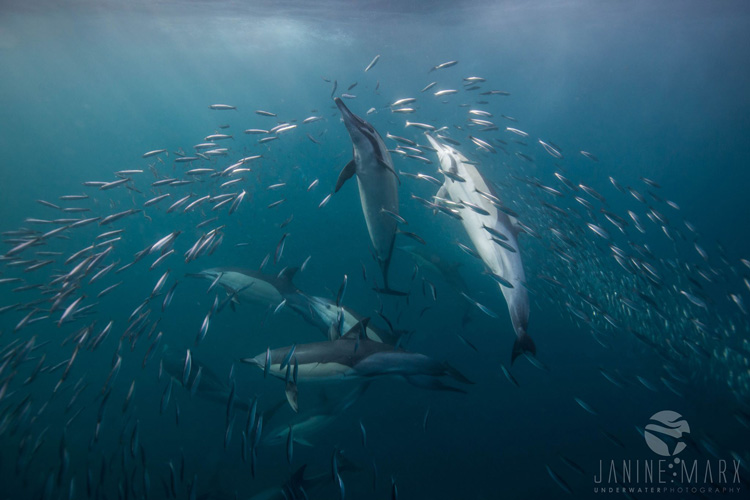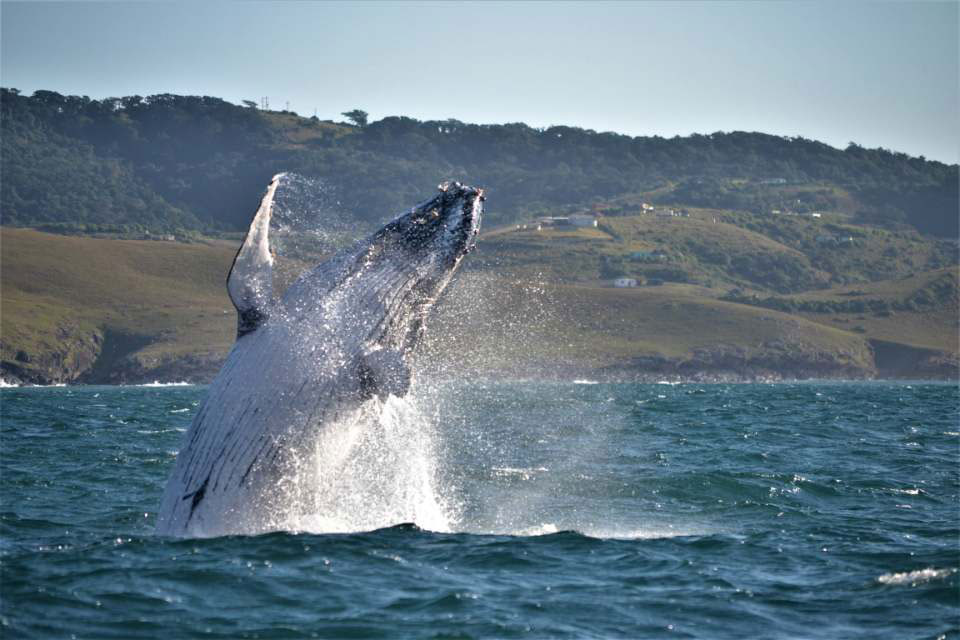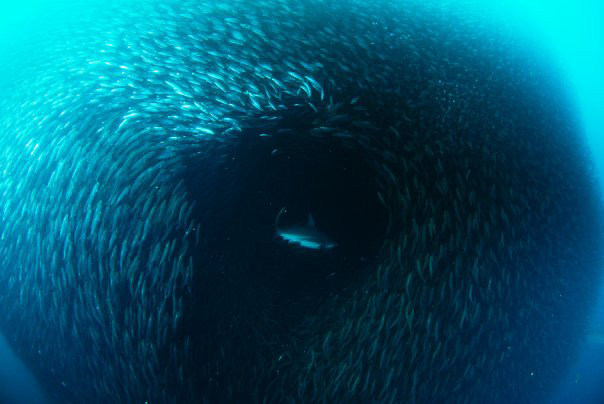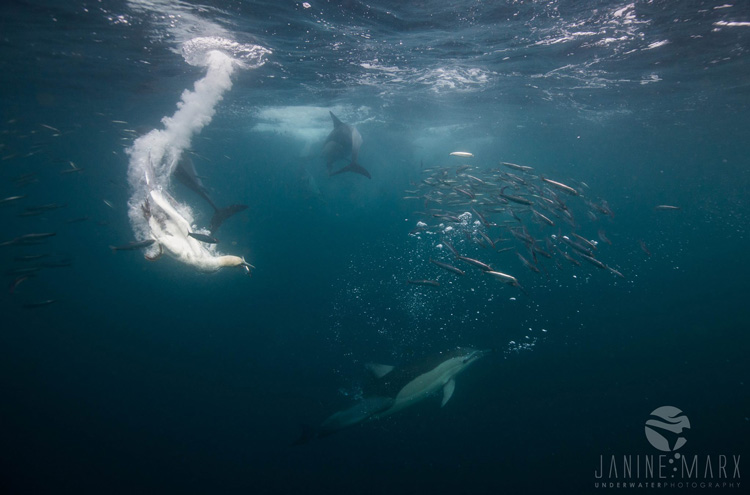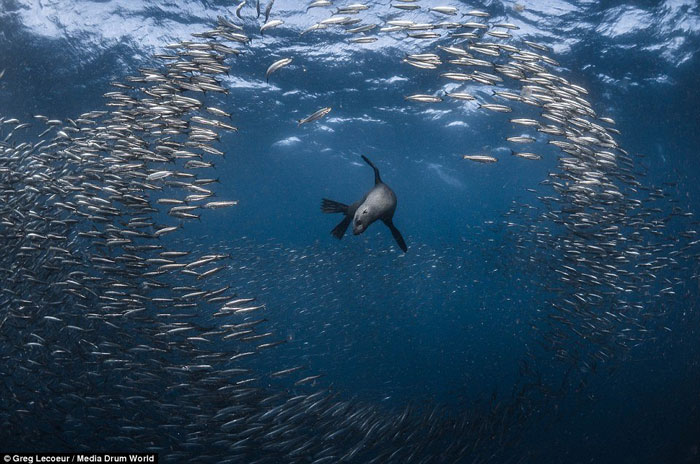The annual migration of sardine (Sardinops Sagax) from the Agulhas Bank of the Cape, past the Wild Coast and up to the southern portions of KwaZulu-Natal to spawn and then return, takes place during South Africa’s winter months and is a natural phenomenon known as the “Sardine Run”. It is rated to be the marine equivalent of the famous Wildebeest migration that takes place on the Masai Mara and Serengeti plains of central Africa and is just as thrilling and spectacular to witness. What is most special is that it is all about the amount of marine life in the same place and at the same time.
Between Coffee Bay, Port St Johns & Mbotyi, the continental shelf comes closest to land than in any other area along the eastern seaboard of S.A.This is very significant as all major ocean migrations do not go from point A – B in a straight line.They tend to follow depth contours, current movements and temperature changes.With the continental shelf so close to land, a funnelling effect is thus created, allowing us access to witness this incredible event.
The time forgotten coastal town of Port St. Johns, situated on the magical Pondoland Wild Coast has become one of the most popular destinations from which to experience the Sardine Run in all its glory.
Experiencing the Sardine Run from the Pondoland coast offers not only a naturally beautiful stretch of rugged coastline, but it is also steeped in cultural traditions allowing the Amapondo people to live by and protect their cultural values…a little piece of true Africa.
Driven by forces not yet completely understood, millions upon millions of sardines leave their cool Cape habitat and move east following the cold current, which is in turn driven up from the south by winter storms, normally during the June to August months.
The northwards movement of sardines is facilitated by a cold inshore northward – flowing counter-current originating on the Agulhas bank and pushed northwards by these annual winter cold fronts from the south.
This expands the suitable habitat favourable to sardines and can extend as high up the KwaZulu-Natal (KZN) coastline as Durban/Umdloti area, after which the remaining sardines and their fry head out to deeper water and use the Agulhas main stream to return to cooler Cape waters. Sardines prefer a water temperature ranging between 14 C – 20 C therefore travel according to temperature changes and thermoclines, at times frustrating Sardine Run operators in judging where the action will pop up.
Huge shoals travel up the coastline feeding in nutrient rich waters with literally hundreds of sharks, dolphins, game fish and oceanic birds following the sardines / baitfish up the coast, constantly harassing and splintering pockets from the main shoals and feeding on these at their own leisure.
This is by far one of the greatest congregations of ocean predators known to man.
As a spectator of the Sardine Run, one will often hear the term ‘Bait ball’. Hundreds of common dolphin (Delphinus delphis & Delphinus Capensis) form super pods of sometimes 100 – 15 000 strong and set off in search of the sardines or other baitfish species.
The Common dolphin has developed a technique of isolating a shoal of sardines or baitfish and herding them by using streams of bubbles, sonar and incredible teamwork into tight pockets known as “bait balls”. They also have the amazing ability to time giving birth to their young just before the sardine run, thus allowing the adults to wean and teach hunting tactics to their calves during this incredibly food rich period of the year.
It is truly graceful poetry to observe these incredible animals at work and at play.
In turn, many shark species take advantage of this great feed, occasionally including the Great white shark (Carcharodon carcharias),Tiger shark ( Galeocerdo cuvier ), Zambezi / Bull shark ( Carcharhinus leucas), but most commonly seen are Copper/Bronze whaler sharks (Carcharhinus brachyurus) and Dusky sharks ( Carcharhinus obscurus ), which when attracted to the activity, arrive sometimes in their hundreds.
At times dolphin and shark can be seen seemingly working together in containing the “bait ball” taking turns in dashing through the food source with mouths open gulping down as many sardines as possible until not a single one is left.
Most “bait balls” are generally driven to the surface effectively blocking off one avenue of escape.
This in turn allows oceanic bird species to take full advantage of this incredible food source. Albatrosses (Diomedeidae), Terns (Sternidae) ,Cape Cormorant (Phalacrocorax capensis) and Skua’s to name a few. The most common of these is the Cape Gannet (Morus capensis), which is a highly skilled aerial predator and is one of the truly remarkable predators from the world of birds.
These birds have amazing eyesight and have the ability to reach depths of anything up to 20 meters by plunge diving from the air into the frenzy, where they animatedly swim around snapping and swallowing any sardine / baitfish within reach. They are true plunge divers and often, upon surfacing, comically fight and squabble over any sardine/ baitfish that has been visibly brought to the surface, offering some fantastic photographic opportunities.
Brydes whales (Balaenoptera edeni) are also regularly seen taking part in the feed by sounding and rocketing up from the depths with mouth open to engulf as much of a “bait ball” as possible. They can be seen on the outskirts or in the middle of the action and do not wait for any permission to start feeding, taking notice of nothing else in doing so. Many a snorkeller has a tale or two of an up close and personal encounter with a Bryde’s whale.
Another totally unrelated migration that takes place during the same period as the sardine movement is that of the Humpback Whales (Megaptera novaeangliae) traveling from Antarctic waters northwards to the warmer waters of Mozambique and Tanzania for calving and breeding purposes.
With the narrowing of the continental shelf along the Wild Coast, family pods have the opportunity to meet up with others of their kind. Spectacular breaches, tail lobbing, fin slapping and playful frolicking can be seen on most days throughout the winter periods of June to October months including their return.
A number of other whale species also make an appearance during the “run” as well, including Southern Right (Eubalaena australis), Brydes (Balaenoptera edeni) and Minke whales (Balaenoptera acutorostrata) to name a few. As the migration reaches KwaZulu-Natal predatory tactics tend to change with shallow waters as the continental shelf once more heads out to sea, going out a considerable distance. Here predators herd sardine pockets into strategic bays, which successfully compacts the fish and blocks off a number of escape avenues, showing an amazing level of intelligence and teamwork between species.
It is along the South Coast of KwaZulu-Natal where most commercial fishermen wait for the sardines to come close enough to be caught in nets.
Teams of between 20 and 40 fisherman drive up and down the coastline looking for accessible pockets. Once found, organized chaos takes over. Small fibreglass ski boats powered by outboard motors and carrying a net with a rope attached are held by the remaining beach crew. Skippers with a keen knowledge of surf launching place the boat in position and release the net whilst doing a large arc around the pocket of sardines. Once the net is in place the boat returns to the beach. The ground crew forms two teams that pull on the nets ropes forming a purse net with wings that is eventually brought to the beach.
Swimmers jump in and eventually herd the sardines into the purse after which they tie the purse off and the job is done till the purse gets to the beach where crating and loading needs to be done as quickly as possible. Hard and tiring work…but sardine “fever” gets the better of everyone.
If conditions are favourable occasionally “beachings” will occur where consistent predator harassment, surf conditions and weather conditions wash thousands upon thousands of sardines up onto the beach or sometimes the commercial fishermen will open a net for the public on the beach that has sardine “fever”.
This generally starts a human feeding frenzy!
The “fever” grips all local inhabitants and holiday makers causing everyone to run around the beach scooping up as many sardines as humanly possible in hats, shirts, skirts, baskets, buckets and all sorts of other containers, desperate to get their hands on a few silvery fish! This chaos can also offer some very interesting and comical photographic opportunities.
The fascination for diving in the famous Sardine Run ocean safari is shared by many avid photographers, divers and snorkellers, most come back religiously year after year to participate in the excitement and adventure.
Boat based viewing is also very popular among photographers and general nature lovers and allows one to get closer to the action and excitement.
This phenomenon is a truly incredible and exciting experience, whether you are capturing the action on camera or memory from above or below the water and this is a MUST DO for all nature & ocean lovers.


